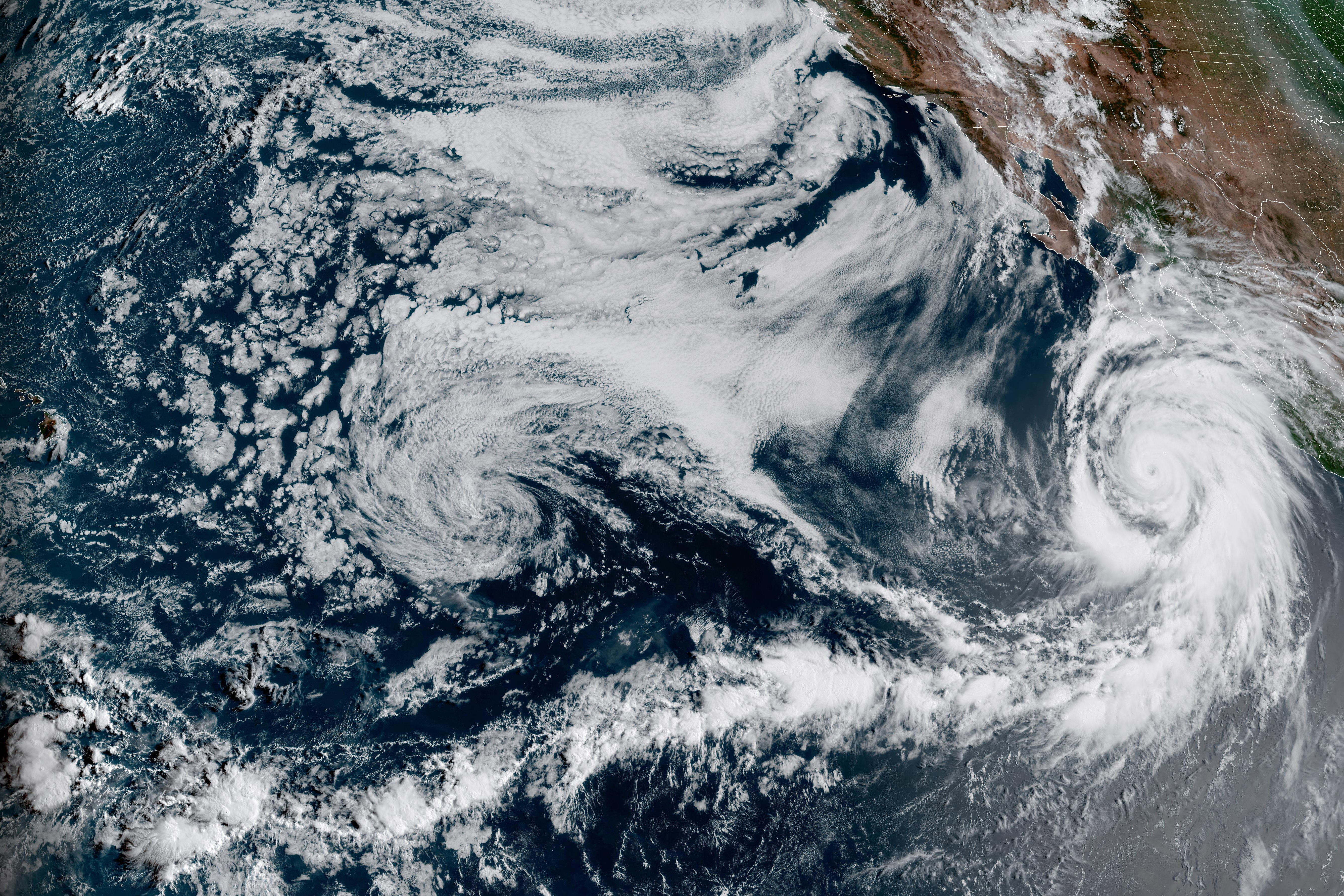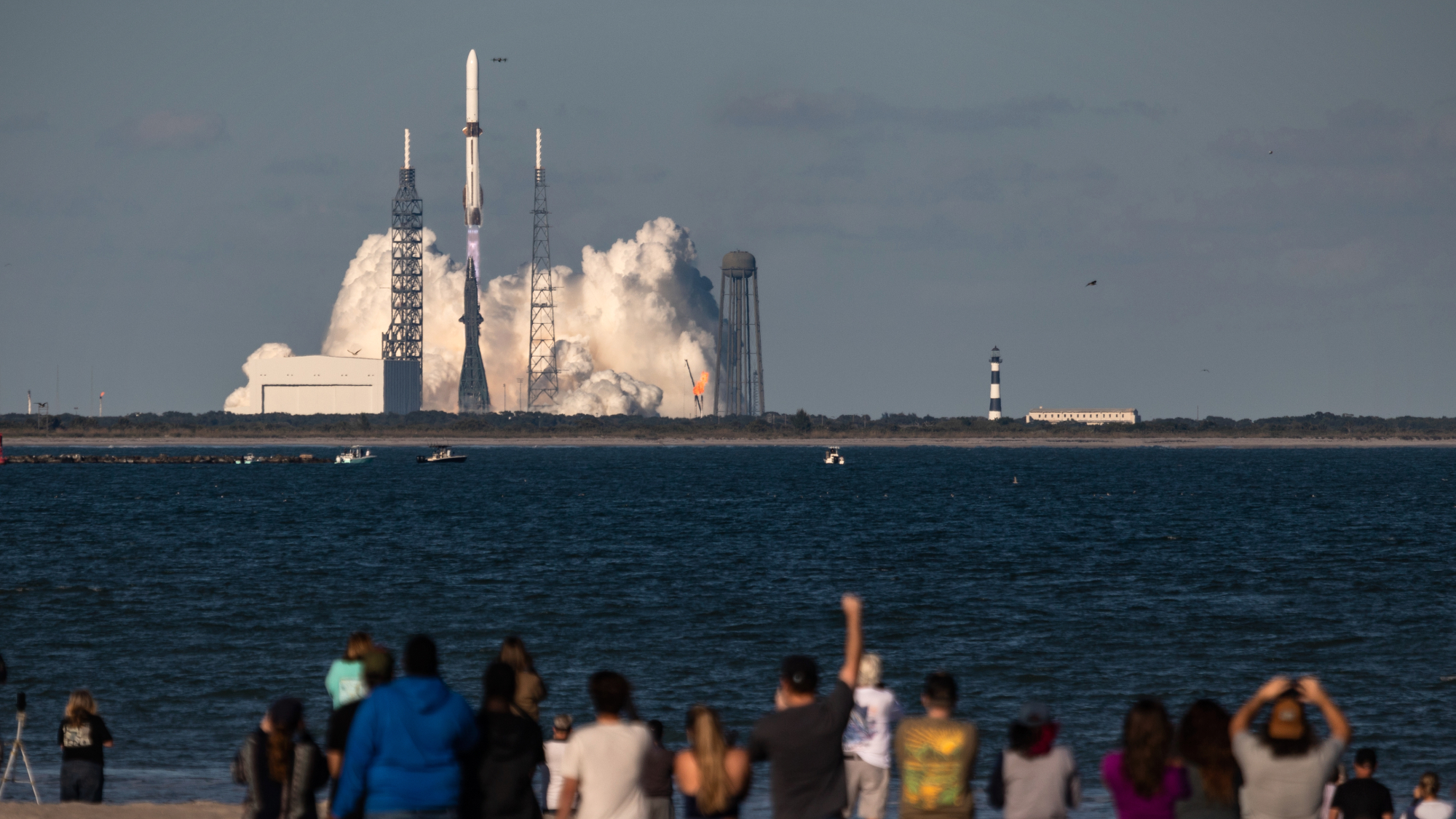Hurricane Hilary bringing unprecedented storm warnings to Southwest


The Southwest United States and parts of Mexico are preparing for the unprecedented landfall of Hurricane Hilary this weekend, as the storm prepares to batter the West Coast in an almost unheard-of event.
The hurricane, which is currently listed as a Category 2 storm, is expected to make landfall on Saturday night near the Baja California coast. Hilary is expected to still be a hurricane at that time, according to the National Weather Service (NWS), but will likely continue to dissipate as it moves inland.
Hilary will bring "flash, urban and arroyo flooding" to the region, the National Hurricane Center (NHC) said, adding that residents should expect "dangerous and locally catastrophic impacts." Hurricane-like conditions are expected along most of the Baja California peninsula, and the NHC said that preparations for heavy rainfall and flooding "should be completed as soon as possible."
The Week
Escape your echo chamber. Get the facts behind the news, plus analysis from multiple perspectives.

Sign up for The Week's Free Newsletters
From our morning news briefing to a weekly Good News Newsletter, get the best of The Week delivered directly to your inbox.
From our morning news briefing to a weekly Good News Newsletter, get the best of The Week delivered directly to your inbox.
Southern California is expected to see up to 10 inches of rain in some areas — a storm of such magnitude has not been seen in the state in 84 years. Los Angeles, Anaheim and San Diego are all expected to receive at least four inches of rain throughout the weekend. However, meteorologists are not expecting the kind of outright devastation seen in Atlantic hurricanes, as Hilary is expected to lose its hurricane status by Saturday night and devolve into a tropical storm by Sunday.
Despite this, massive rainfall is expected into next week, and officials have placed Southern California under a tropical storm watch for the first time ever. Some areas in California and eastern Nevada could see a year's worth of rainfall in just a few days, the Los Angeles Times reported. One report from AccuWeather even said that Death Valley National Park, one of the hottest and driest places on Earth, could receive up to four inches of rain.
A free daily email with the biggest news stories of the day – and the best features from TheWeek.com
Justin Klawans has worked as a staff writer at The Week since 2022. He began his career covering local news before joining Newsweek as a breaking news reporter, where he wrote about politics, national and global affairs, business, crime, sports, film, television and other news. Justin has also freelanced for outlets including Collider and United Press International.
-
 Will there be peace before Christmas in Ukraine?
Will there be peace before Christmas in Ukraine?Today's Big Question Discussions over the weekend could see a unified set of proposals from EU, UK and US to present to Moscow
-
 Quiz of The Week: 6 – 12 December
Quiz of The Week: 6 – 12 DecemberQuiz Have you been paying attention to The Week’s news?
-
 The week’s best photos
The week’s best photosIn Pictures A man's best friend, the elephants in the room, and more
-
 Blue Origin launches Mars probes in NASA debut
Blue Origin launches Mars probes in NASA debutSpeed Read The New Glenn rocket is carrying small twin spacecraft toward Mars as part of NASA’s Escapade mission
-
 Dinosaurs were thriving before asteroid, study finds
Dinosaurs were thriving before asteroid, study findsSpeed Read The dinosaurs would not have gone extinct if not for the asteroid
-
 SpaceX breaks Starship losing streak in 10th test
SpaceX breaks Starship losing streak in 10th testspeed read The Starship rocket's test flight was largely successful, deploying eight dummy satellites during its hour in space
-
 A rat infestation is spelling trouble for the almond industry
A rat infestation is spelling trouble for the almond industryThe Explainer The infestation has affected at least 100,000 acres in California
-
 Rabbits with 'horns' sighted across Colorado
Rabbits with 'horns' sighted across Coloradospeed read These creatures are infected with the 'mostly harmless' Shope papilloma virus
-
 Lithium shows promise in Alzheimer's study
Lithium shows promise in Alzheimer's studySpeed Read Potential new treatments could use small amounts of the common metal
-
 Scientists discover cause of massive sea star die-off
Scientists discover cause of massive sea star die-offSpeed Read A bacteria related to cholera has been found responsible for the deaths of more than 5 billion sea stars
-
 'Thriving' ecosystem found 30,000 feet undersea
'Thriving' ecosystem found 30,000 feet underseaSpeed Read Researchers discovered communities of creatures living in frigid, pitch-black waters under high pressure
